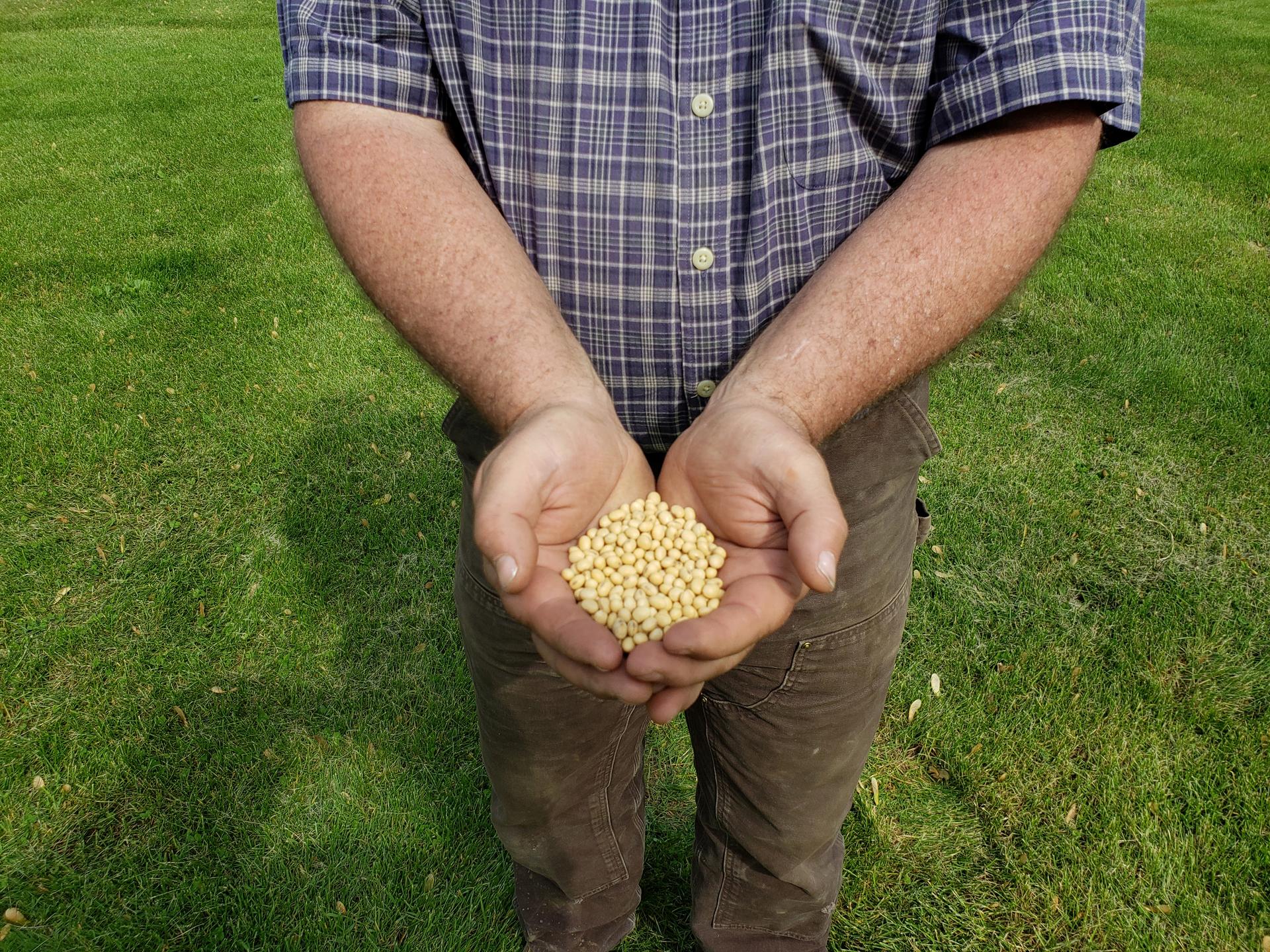How soybeans became China’s most powerful weapon in Trump’s trade war
A farmer holds soybeans in Iowa.
Soybeans may not seem all that useful in a war. Nonetheless, they’ve become China’s most important weapon in its ever-worsening trade conflict with the US.
China, the world’s biggest buyer of the crop, has reportedly stopped purchasing any American soybeans in retaliation for the Trump administration raising tariffs on $250 billion of Chinese goods. This is very bad news for US farmers.
While China’s targeting of soybeans may have come as something of a surprise to most Americans, to a professor of agricultural economics who studies international commodity markets for a living, this was not at all unexpected.
Even before the conclusion of the 2016 presidential race, trade analysts were already weighing the possibility that China might impose an embargo on US soybean imports based on protectionist rhetoric from both candidates.
As a result, with the trade war in full swing, American soybean farmers are now among its biggest losers. Here are a few figures that show why.
Soybeans, by the numbers
Soybeans are a crucial part of the global food chain, particularly as a source of protein in the production of hogs and poultry.
The importance of China as a market for soybeans has been driven by an explosion in demand for meat as consumers switch from a diet dominated by rice to one where pork, poultry and beef play an important part. Chinese production of meat from those three animals surged 250% from 1986 to 2012 and is projected to increase another 30% by the end of the current decade. However, China is unable to produce enough animal feed itself, hence the need to import soybeans from the United States and Brazil.
In 2017, the US accounted for $21.4 billion worth of global soybean exports, the second largest after its main competitor Brazil, which exported $25.7 billion.
Meanwhile, in 2017 China accounted for the lion’s share of global soybean imports at $39.6 billion, or two-thirds of the total.
Back in 2017, that was good news for American farmers, when US exports made up about a third of Chinese purchases, or $13.9 billion. That made soybeans the United States’ second-most valuable export to China after airplanes.
But US exports to China have fallen dramatically since China slapped a 25% tariff on Americans soybeans last April as part of its initial response to President Donald Trump’s trade war.
In the current farm marketing year, which began Sept. 1, US farmers have exported just 5.9 million metric tons of soybeans to China, compared with an average of 29 million at the same point during the previous three years — or about 80% less.
That’s why the tariffs have tremendous potential to hurt farmers in my state of Ohio, where soybeans were the number one agricultural export in 2017 at $1.3 billion. China is the state’s largest export market.
And yet nationally, Ohio is just the seventh-largest exporter of soybeans, after Illinois, Iowa, Minnesota, Nebraska, Indiana and Missouri, all of which are suffering from the tariffs.
Not only do farmers stand to lose out by giving up market share to Brazilian farmers, but soybean prices at the port of New Orleans have fallen as well and are currently $9.35 a bushel compared with $10.82 per bushel a year ago. This has hurt incomes and created a double whammy for Midwest farms.
This is, of course, why the Chinese chose to place a tariff on US soybeans in the first place. Farmers will hurt a lot, and soybeans are produced in states where many of them voted for Donald Trump. China’s hope, presumably, is that farmers will lobby the administration to step back from further escalation of the trade war.
That seems unlikely, given the $28 billion in aid the Trump administration is offering farmers to soften the blow and the possibility of higher tariffs on an additional $325 billion worth of Chinese imports. At this point, it looks like both sides are hunkering down for a prolonged trade war.
This is an updated version of an article originally published on April 5, 2018.![]()
Ian Sheldon is the chair in agricultural marketing, trade and policy at The Ohio State University.
This article is republished from The Conversation under a Creative Commons license. Read the original article.
